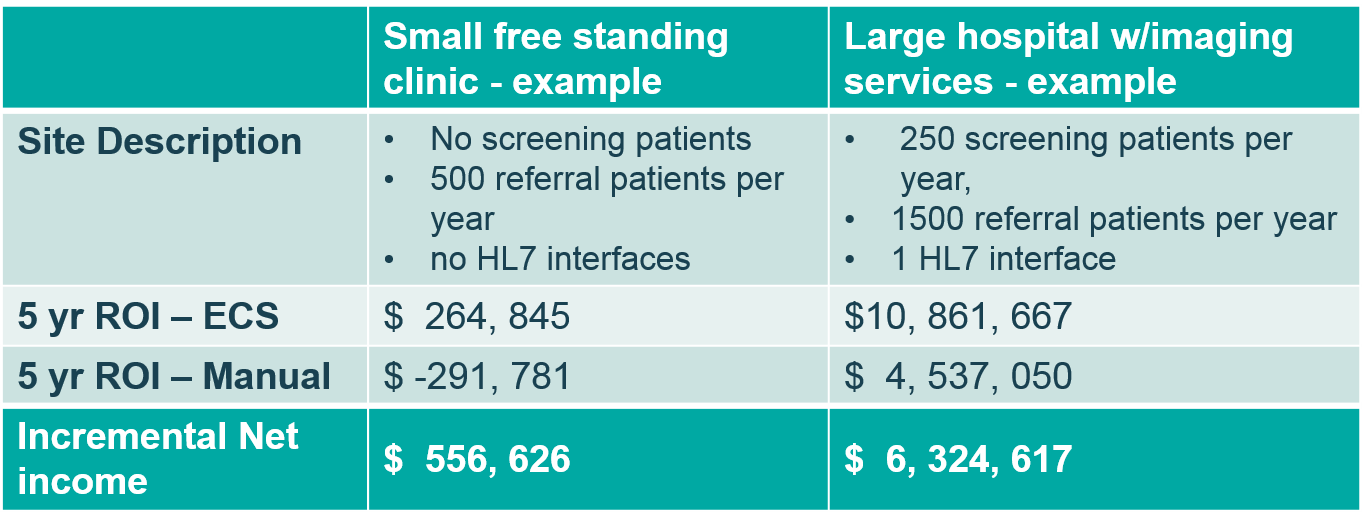Based on our experience, most oncology healthcare providers believe in the value of navigation and survivorship, and most patients appreciate having access to it. These services can help providers ensure patients receive the long-term care they need, and help patients play a more active role in their health. The Institute of Medicine has been advocating survivorship since their 2005 “Lost in Transition” paper, and the American College of Surgeons Commission on Cancer has now changed their accreditation requirements to include survivorship planning.
So why isn’t everyone doing it? One of the most common obstacles organizations face is cost. Managing a large-scale survivorship program usually requires the use of new electronic tools, and often hiring dedicated staff members. For many organizations, the investment is hard to justify, especially in a time of shrinking budgets.
What many organizations don’t realize is that survivorship & navigation can actually deliver a return on investment, often within a few years of implementation. We are now pleased to introduce a Pro-forma tool that calculates what we expect this return to be. For example, take a look at the 5-year return from 2 fictitious, though typical, organizations below.

This tool was developed in partnership with American Medical Accounting & Consulting Inc (AMAC), one of the leading firms in the radiation oncology industry. Based on this reimbursement data, and information about the size, make-up and growth projections of an organization, we can calculate an expected 5-year ROI to help justify an initial investment. Although the data above is fictitious, it represents the real return organizations can expect to realize when using an electronic survivorship product like EQUICARE CS.
Don’t believe us? Let us prove it! Contact us to learn more about where these numbers come from and get an ROI calculation specific to your organization.
More questions? We’ll try to answer some below:
- What’s the difference between incremental net income and ROI?
The ROI is simply the difference between the total revenue and expenses of managing a survivorship program. The incremental net income is the difference between the ROI an organization realizes when using an electronic tool like ECS, and the ROI from running a manual survivorship program. This is an important figure to present when considering whether to introduce an electronic tool, or attempt a manual program.
- What is a manual survivorship program?
In the table above, we reference a manual survivorship program – this is how we describe programs that are run using paper or excel spreadsheets. While it’s possible to run a program like this, it’s less efficient, and for some organizations, particularly free-standing clinics like the one in the example above, actually causes the organization to lose money.
- Where does the revenue come from?The major sources of revenue are from:
- Increased rates of patient attendance at reimbursable follow-up appointments
- Increased Nurse Navigator efficiency – fewer FTEs can manage the same (or more) patients
- For hospitals with imaging – we include revenue from additional in imaging studies, which may have been lost without survivorship & navigation
- Do you include staff salaries in this calculation?
Yes, we use your current size and plans for the growth of the program to estimate the number of nurse navigators (or other dedicated employees) required to manage the program now and in the years to come. This is included in the expense calculation.

